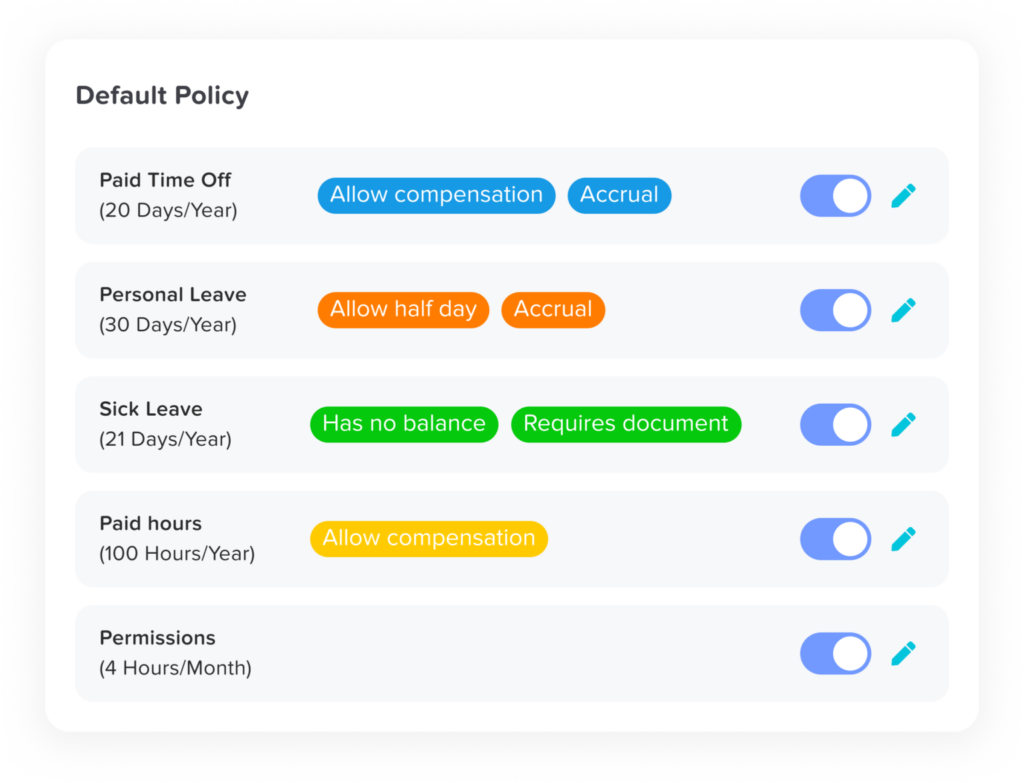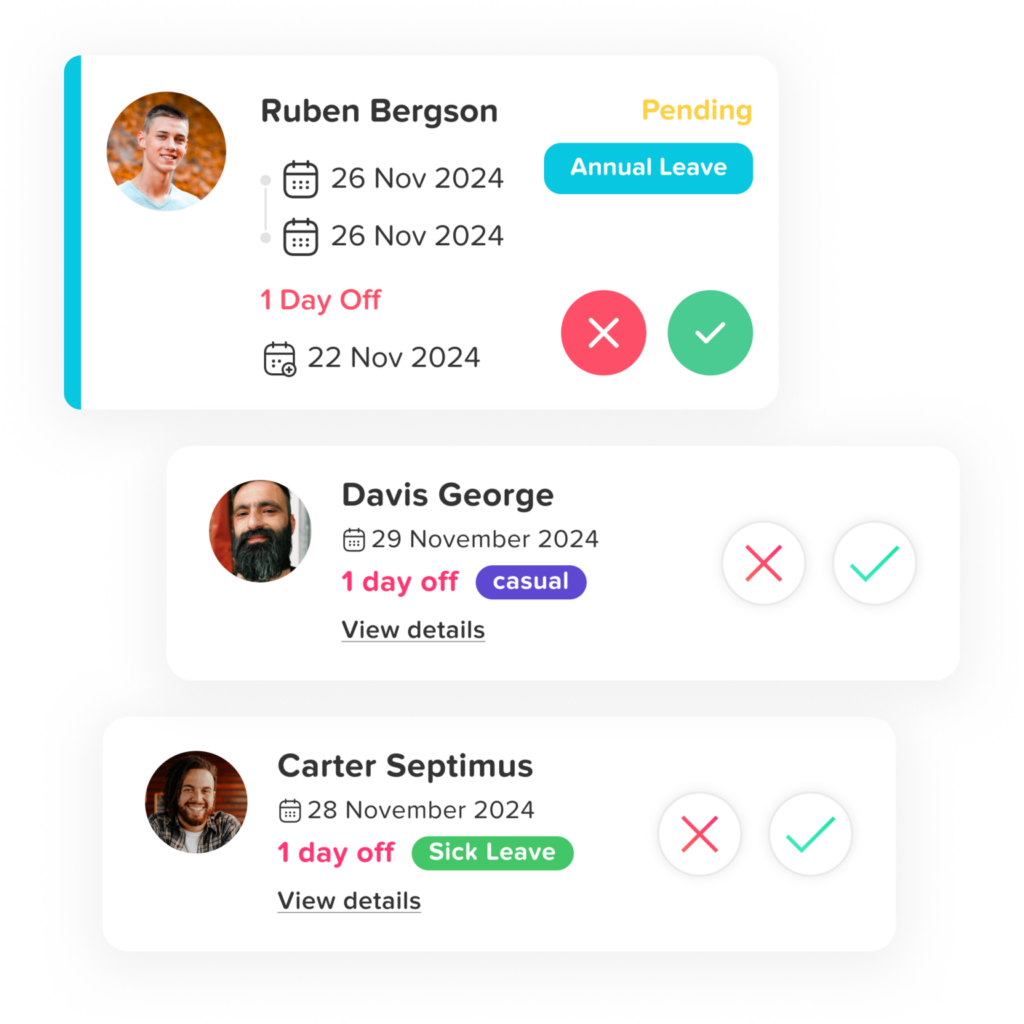Table of Contents
TogglePublic holidays often present the ideal opportunity for employees to stretch their time off creating long weekends or even full weeks away from work with minimal impact on their paid leave balances. But because these holidays are universally recognized and valued, they tend to become high-demand periods for time-off requests. Without careful planning, your request may be denied, or worse, lead to team-wide workflow issues.
In this guide, you’ll learn everything you need to know to successfully request leave during public holidays, maximize your time off, and remain a team player.
1. Understand the Public Holidays Landscape in Your Country or Region
Before planning any time off, you need to know exactly which public holidays apply to your work calendar. This helps you align your leave dates with actual holidays and avoid scheduling conflicts.
Here’s what to keep in mind:
Check national and regional differences: Some holidays are only observed in specific cities, states, or provinces.
Understand religious and floating holidays: Events like Eid, Diwali, or Chinese New Year follow lunar calendars and vary year by year.
Account for global team differences: If your company operates across multiple countries, holidays in one region may not apply to others.
Track school holidays if relevant: Employees with families often align time off with school breaks, which may impact team availability.
Use automated tools: A leave tracker like Day Off provides localized public holiday calendars, reducing manual effort and mistakes.
By staying aware of holiday dates, you’ll be in a better position to plan efficiently and avoid disappointment.
2. Familiarize Yourself With Internal Leave Policies
Company leave policies are not one-size-fits-all. While some businesses may close entirely for public holidays, others remain fully operational, especially in sectors like customer support, logistics, and tech.
To avoid confusion or rejections, carefully review your company’s policies regarding:
How far in advance leave requests must be submitted (commonly 2–4 weeks)
Blackout periods, such as the end of the fiscal quarter or peak retail seasons
Rules about seniority-based approvals, which may favor longer-serving employees
Maximum leave quotas per team or department, especially during high-demand periods
Consult your HR portal or employee handbook or speak directly with HR to fully understand the guidelines. Submitting a request that ignores policy is one of the most common reasons for denial.

3. Plan Your Leave Well in Advance
Requesting leave around public holidays is highly competitive. The earlier you plan, the better your chances of approval especially for peak seasons.
Here’s how to get ahead:
Review the full-year calendar at the start of the year to identify high-value opportunities like long weekends and bridge days.
Prioritize your key dates: Highlight which holidays are most important to you, such as religious events, family gatherings, or travel windows.
Submit requests early: Aim to request leave at least 1–3 months in advance during popular holiday periods.
Coordinate with teammates: Review team calendars to avoid overlapping time off and maintain adequate staffing.
Stay flexible if needed: Offering alternative dates or partial days off can help your manager accommodate your request more easily.
Being proactive and planning early shows initiative and makes it easier for your employer to say yes.
4. Communicate Clearly and Thoughtfully
Many employees simply click “Request Leave” in their HR software without explaining anything. While that might be enough for quiet periods, public holiday leave often requires more context.
When making your request, communicate:
Your reasons for the time off, especially if it’s tied to family events, religious observances, or mental health
The exact dates and how they align with public holidays or weekends
Whether you’re open to negotiating on dates if staffing becomes an issue
Clear communication fosters trust and makes it easier for your manager to make a well-informed decision. Remember, it’s not just about your need to rest—it’s about balancing your needs with the team’s.
5. Offer Solutions, Not Just Requests
A great way to increase your chances of approval is to come to the conversation with solutions not just a time-off request. Managers are more likely to approve leave when it doesn’t disrupt operations or burden other team members.
Here are ways you can make your request more manager-friendly:
Propose a handover plan, listing what needs to be done in your absence and who can handle it
Offer to swap shifts or cover for someone else later in exchange
Volunteer to check in briefly during critical moments, if absolutely necessary
By offering these kinds of solutions, you show that you’ve thought beyond your own time off and are actively contributing to team success—even when you’re away.
6. Use a Leave Management App to Your Advantage
Digital leave tracking is no longer a luxury it’s a necessity, especially during public holidays when HR teams juggle multiple requests. Relying on manual systems or email chains can cause confusion, miscommunication, or worse double-booked leave approvals.
A tool like Day Off simplifies the process for both employees and employers by offering:
Automatic public holiday calendars by region
Transparent views of who else is off during your requested dates
Streamlined approval workflows that notify you in real time
This reduces delays and makes it easier to submit timely, policy-compliant, and visible leave requests improving your chances of success.
7. Be Strategic with Bridge Days and Long Weekends
Strategic use of your PTO around public holidays can significantly increase your total time off without burning too many vacation days.
Consider these smart tactics:
Bridge days: If a holiday falls on a Thursday, taking Friday off turns it into a 4-day weekend.
Split-week breaks: When a holiday lands mid-week, a single leave day can provide a mini-break or travel window.
Extended vacations: Combine weekends, public holidays, and 1–2 leave days for a weeklong escape.
Using a calendar planning tool can help visualize these opportunities early in the year helping you submit smarter, more efficient leave requests.
8. Respect Workplace Dynamics and Team Schedules
Getting your leave approved shouldn’t come at the cost of your coworkers’ well-being. Be considerate of team dynamics and operational priorities when planning your time off.
Key considerations:
Are there critical deadlines around your desired leave?
Will other team members be on vacation at the same time?
Did you take a similar holiday last year while others covered for you?
If possible, rotate major holidays among the team to promote fairness. Being known as a team player will work in your favor when it’s your turn to ask for a break.
9. Avoid Common Mistakes That Lead to Leave Denial
Even well-intentioned leave requests can get rejected due to avoidable errors. Here’s what to watch for:
Late submissions: Waiting until the last minute often means you’re competing with approved leave.
Ignoring company policy: Missing critical rules like notice periods or blackout dates.
Overlapping with multiple coworkers: Especially in smaller teams, redundancy matters.
Poor communication: Failing to explain why you’re taking leave or how your work will be covered.
Avoiding these pitfalls ensures your request stands out positively, rather than as an administrative burden.
10. After Submission: What to Do While Waiting for Approval
Once you’ve submitted your leave request:
Be patient but proactive—give your manager a few days, then follow up politely if needed.
Avoid making non-refundable plans (e.g., flight bookings) until you receive confirmation.
If approved, inform your team, set up automated out-of-office replies, and ensure all deliverables are covered before your leave.
Also, update your team calendar and workflow tools to reflect your absence. This avoids confusion and keeps communication smooth while you’re away.

FAQs
1. Is it okay to request leave immediately before or after a public holidays?
Yes, but it’s a high-demand period, so approvals may be limited. Submitting your request well in advance, offering coverage, and aligning with team availability will increase your chances.
2. Can my employer reject my leave request during public holidays?
Absolutely. Employers have the right to reject leave requests if:
The request violates company policy
Too many employees are off during the same period
Business operations would be affected
Providing notice and a clear backup plan helps reduce the likelihood of rejection.
3. Do I have to use PTO for public holidays?
In most cases, no. Public holidays are typically paid non-working days that don’t deduct from your PTO balance. However, if you want additional days off before or after the holiday, those extra days would usually come from your PTO.
4. What if multiple employees request the same public holidays period off?
Managers may approve based on:
First-come, first-served policy
Seniority or rotation system
Business coverage needs
To improve your chances, request early and be flexible. Offering alternatives or compromises shows professionalism.
5. How many days in advance should I request time off around a public holidays?
Check your company’s policy, but a general best practice is:
At least 2–4 weeks in advance for standard requests
1–3 months in advance for high-demand holidays like Christmas, New Year, or national celebrations
6. Can I combine public holidays with unpaid leave if I run out of PTO?
In many companies, yes, with approval. If you’ve used all your paid leave, some employers may allow unpaid time off. Be sure to confirm this with HR, as unpaid leave might affect your salary or benefits.
7. How can I track public holidays across different regions if I work in a remote or international team?
Use a leave management system like Day Off that supports multi-region holiday calendars. This makes it easier to:
Know when teammates are off
Avoid requesting leave during business-critical times
Plan leave without disrupting workflows in other countries
8. What happens if I take unauthorized leave during a public holidays period?
Taking leave without approval can lead to disciplinary action, including:
A written warning
Salary deduction
In extreme cases, termination
Always follow your company’s official process and wait for leave approval before making commitments.
